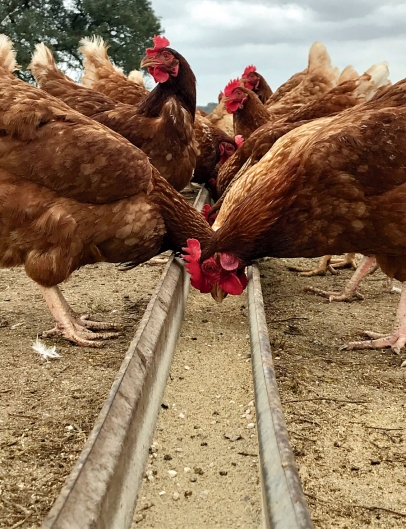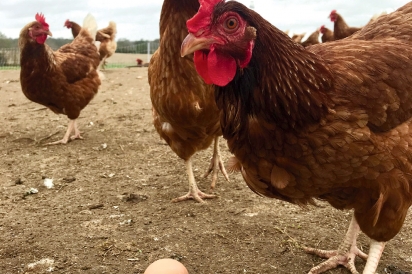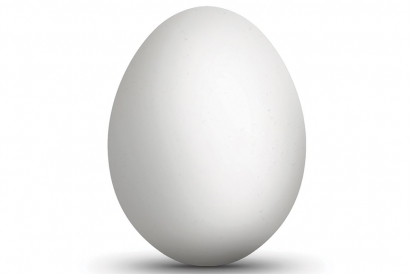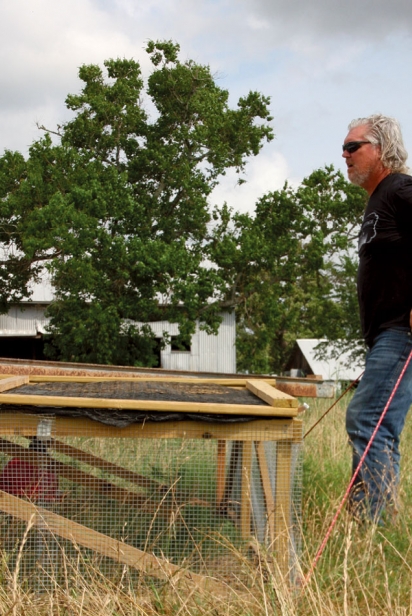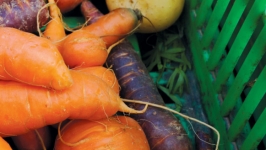Do the Chicken Dance: Pasture-Raised Chickens at Whitehurst Farm
As a chef, I often get the question: “So, what’s your favorite dish?’ Many assume it is something like foie gras, caviar or Wagyu beef, but no. Mine is a humble chicken straight from the farm, cooked sweet and slow. Whilst resting the bird after roasting, I hit the pan with some lemon juice, fresh thyme and adjust the seasoning. Then I serve it up with some crispy roast potatoes and some root vegetables. Perfection.
It is strange, though, that people will choose steak and not flinch about paying top dollar for it. But when it comes to chicken, they will not. For restaurants, customers’ blinders on the subject make it very hard for them to even contemplate putting a “happy” local chicken on the menu. A factory bird will go for $1 to $2 per pound, whereas a farm chicken will cost two to three times that much. It’s not that the local farmer is trying to gouge us: This is what it truly costs to raise a good bird.
So essentially, either the farmer works for a pittance, for the love of what they are doing, or the customer or the restaurant have to suck up the difference—which is where the whole dance begins.
My farmer friend Michael Marchand at Whitehurst Heritage in Brennan, Texas, is all too aware of this conundrum. Michael breeds meat and layer chickens to sell to the general public and restaurants in the Houston and Austin areas.
The first morning I met with Michael, he had a rope around his back and was pulling a large chicken pen across the field. Michael uses what’s called a “Salatin Pen,” named after Joel Salatin, a great pioneer in the rotational poultry farming movement. This pen gives protection from the sun and predators but most importantly, it can be moved pretty easily. It has wheels on one side, enabling the farmer to pull the pen over one plot. This allows the chickens to have fresh grass to forage in—they do love bugs and worms—as well as their regular feed. They leave their previous plot of pasture fertilized with their droppings so it gets a nutritional boost and nourishes the land. This is where rotational farming comes into practice. Michael has many of these pens and moves them by hand daily to produce a better chicken for his customers.
Although the Cornish Cross is invariably the national chicken of choice, the brutality of Texas summers can be troublesome for this breed as they were bred to be very fast-growing and in air conditioned environments. Michael works around this by feeding them a lower-protein food and encouraging a little more exercise. He is also presently about to raising a different breed which he hopes will able take the heat and still produce a mature tasty bird in a timely manner. All this, of course, takes time, money and constant monitoring. Farming chickens on pasture is “labor inefficient and costly,” he says. However, “we are the shepherds and this is what we are supposed to be doing. And it results in a phenomenal product.” It takes many weeks and steps of nurturing from brooder areas (where the chicks are kept warm, safe and dry) to pullet areas (for young hens) and then eventually out to the adult pens on grass.
In addition, there is the work of taking them to be processed, packaged, transported and delivered to market to be sold. And then there are the majestic Pyrenees, the farm’s 24/7 security team that eat their weight in dog food. This is why a good chicken is not $5.
People always throw the old “I can’t afford to pay that just for one chicken, I have a family!” line at me. My rebuttal is always the same: to remind them that people from around the world have been making multiple meals out of one bird to feed their families for thousands of years. It can be done, it just takes planning and a little creativity. This is a good answer for the general public but how does the restaurateur make it work when there are no leftovers to retrieve?
This is where you, our reader and local food lover, come into the dance. It is in the hands of all of us to make the right choices, better choices. For chefs to be brave and put a “happy” local bird on their menu at a price it really deserves. For diners to realize that a good chicken deserves a good price. For us to not be afraid of that higher price when we purchase a chicken from a farmers market. Consider the love, care, time and money that our farmers have put into getting us consumers the best chicken they possibly can. It is how we should look at “buying local” in general.
Over the years I’ve done a lot of driving from farm to farm in our rural communities and some of what I’ve seen has shaken me to my core: the prevalence of modern day “ghost towns.” They’re everywhere. The main street littered with closed stores and “for rent” signs, small farms with rundown houses and no sign of life. This is what happens to small towns and their businesses when we stop shopping “mom and pop” and rely on the convenience of large chains and online ordering. We need to realize that we should put our money where are morals are.
For Michael and his fellow farmers, it’s all about getting this movement rolling. It’s about finding consumers who care and finding more and more people to buy their products on a regular basis. This is part of the dance. If farmers can sell enough volume and create traction in the market then this would allow for them to lower their prices, helping the consumer. And ’round and around it goes.
Apparently, there is a vague grading scale of poultry, but does anybody know about it or even know where to find it? Perhaps my farmer friends, chef friends and I need to produce a better chicken grading scale. Maybe this is the answer? Not numbers or letters, but something a bit more enticing.
Grade A becomes PERFECTION
Grade B becomes 24 KARAT
Grade C becomes PRIVILEGED
After seeing how Michael raises his birds and feeding them to my own family, I’m happy to report that these are PERFECTION rated and are worth every penny.


